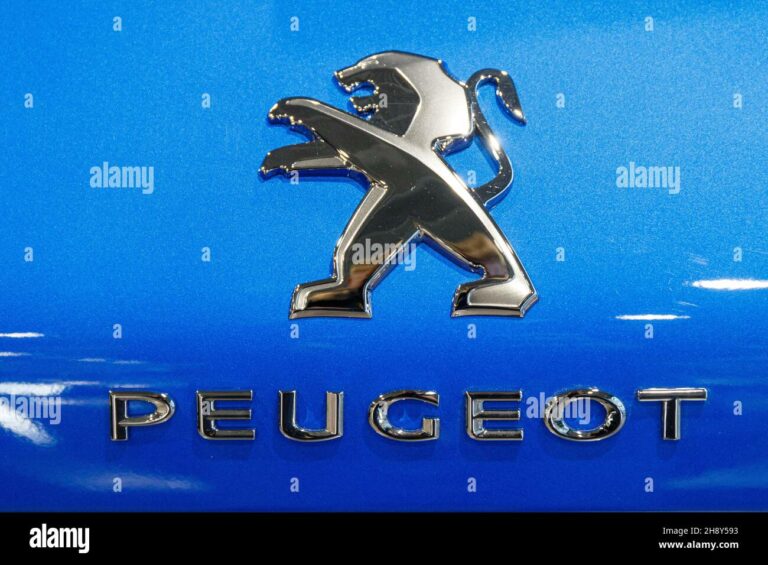Top Rated Car Seat Brands: Your Ultimate Guide to Child Safety on the Road
Top Rated Car Seat Brands: Your Ultimate Guide to Child Safety on the Road cars.truckstrend.com
The moment you become a parent, your world shifts. Every decision is filtered through the lens of your child’s well-being, and few choices are as critical as selecting the right car seat. A car seat isn’t just a convenience; it’s a life-saving device designed to protect your most precious cargo in the event of a collision. "Top Rated Car Seat Brands" refers to manufacturers consistently recognized for their commitment to safety, innovative design, ease of use, and overall reliability, often backed by rigorous testing, positive user reviews, and expert endorsements.
Navigating the vast array of options can feel overwhelming, but understanding what makes a brand "top-rated" and identifying the best fit for your family’s unique needs is paramount. This comprehensive guide will delve into the world of car seats, helping you make an informed decision that provides peace of mind every time you hit the road.
Top Rated Car Seat Brands: Your Ultimate Guide to Child Safety on the Road
Understanding Car Seat Types: A Foundation for Choice
Before diving into specific brands, it’s essential to grasp the different types of car seats available, each designed for a particular age, weight, and height range:
- Infant Car Seats (Rear-Facing Only): These seats are designed exclusively for newborns and infants, typically up to 22-35 pounds and around 32 inches. They are lightweight, often come with a carrier handle and a base that stays in the car, making it easy to click your baby in and out without disturbing them. Their primary function is to protect a baby’s fragile head, neck, and spine by cradling them and distributing crash forces across their entire body.
- Convertible Car Seats: As the name suggests, these seats "convert" from rear-facing to forward-facing. They offer a longer lifespan than infant seats, accommodating children from birth (or around 5 pounds) up to 40-65 pounds rear-facing, and then transitioning to forward-facing up to 65 pounds or more. This versatility makes them a popular choice for parents looking for a single seat to last through several developmental stages.
- All-in-One Car Seats: These are the ultimate multi-stage seats, designed to transition from rear-facing to forward-facing, and finally to a high-back booster, and sometimes even a backless booster. They offer the longest usability, often accommodating children from birth up to 100-120 pounds. While larger and heavier, their long-term value and convenience are significant.
- Booster Seats: Once a child outgrows the weight or height limits of their forward-facing car seat (typically around 40 pounds and 4 years old), they transition to a booster seat. Boosters elevate the child to ensure the vehicle’s seat belt fits correctly across their shoulder and hips.
- High-Back Boosters: Provide head and neck support, and sometimes side-impact protection, even if the vehicle doesn’t have a headrest.
- Backless Boosters: Are more portable and suitable for older, taller children when the vehicle’s seat provides adequate head support. Children should remain in a booster until they are at least 4’9" tall and typically between 8 and 12 years old.

Key Factors Defining a Top-Rated Car Seat

What elevates a car seat brand from good to "top-rated"? It’s a combination of several critical elements:
- Safety Standards & Crash Test Performance: This is non-negotiable. Top-rated brands consistently meet or exceed federal safety standards (FMVSS 213 in the US). Look for seats that perform well in independent crash tests (like those conducted by NHTSA, Consumer Reports, or ADAC in Europe). Features like anti-rebound bars, side-impact protection, energy-absorbing foam, and a robust steel frame are indicators of superior safety.
- Ease of Installation: A car seat is only safe if installed correctly, and studies show a high percentage of car seats are installed improperly. Top brands prioritize user-friendly installation mechanisms, whether it’s color-coded belt paths, push-button LATCH connectors, or innovative tensioning systems (like Britax’s ClickTight or Chicco’s SuperCinch). Clear manuals and online tutorials are also crucial.
- Comfort & Ergonomics: A comfortable child is a safer child, as they are less likely to try to unbuckle themselves. Look for ample padding, breathable fabrics, multiple recline positions, and easy-to-adjust harness systems that grow with your child.
- Durability & Materials: Top-rated seats are built to last through years of use and potential spills. High-quality, durable fabrics that are easy to clean, sturdy plastic shells, and strong metal components contribute to longevity.
- User Reviews & Brand Reputation: Real-world feedback from other parents provides invaluable insight into a seat’s everyday usability, comfort, and potential quirks. A brand’s long-standing reputation for safety and customer service is also a strong indicator of reliability.
- Additional Features: While not essential for safety, features like integrated cup holders, machine-washable fabrics, no-rethread harnesses, and narrow designs for fitting multiple seats across a back row can significantly enhance the user experience.

Spotlight on Top-Rated Car Seat Brands
Several brands consistently earn top marks for their commitment to safety and innovation. Here are some of the leaders in the market:
- Chicco: Renowned for their incredibly easy-to-install car seats, Chicco’s KeyFit 30 infant car seat is a perennial favorite, celebrated for its SuperCinch LATCH tightener and clear level indicators. Their NextFit Zip convertible seat also earns high praise for its nine recline positions and zip-off fabric for easy cleaning, making installation and maintenance a breeze. Chicco excels in combining safety with user-friendliness.
- Graco: A household name in baby gear, Graco offers a wide range of car seats known for their affordability, versatility, and robust safety features. The Graco SnugRide SnugFit 35 infant seat is a popular choice, offering excellent value. The Graco 4Ever DLX 4-in-1 convertible car seat is a standout, designed to last for a decade, accommodating children from infancy through booster stage with impressive adjustability and comfort.
- Britax: Synonymous with superior safety engineering, Britax car seats often feature robust steel frames, energy-absorbing shells, and advanced side-impact protection. Their patented ClickTight Installation System, found in models like the Boulevard ClickTight convertible car seat, makes correct installation virtually foolproof, a critical factor for safety. The Britax B-Safe Gen2 FlexFit infant car seat also offers a sturdy design and secure fit.
- Nuna: For parents seeking premium design, high-quality materials, and advanced safety features, Nuna is a top contender. Their PIPA Lite RX infant car seat is incredibly lightweight yet incredibly strong, featuring Aeroflex™ foam. The Nuna RAVA convertible car seat is celebrated for its extended rear-facing capabilities, simple "True Tension" door for installation, and luxurious, flame-retardant-free fabrics, offering both style and substance.
- Clek: Clek stands out for its emphasis on extended rear-facing, robust safety features, and narrow designs, ideal for fitting three seats across a back row. Models like the Clek Foonf and Clek Fllo convertible car seats feature a steel and magnesium sub-structure, advanced side-impact protection, and energy-absorbing crumple zones. The Clek Liing infant car seat is also highly rated for its secure recline and rigid LATCH system, providing a superior installation.
- Maxi-Cosi: Known for their European design, comfort, and safety innovations, Maxi-Cosi offers stylish and protective car seats. The Maxi-Cosi Mico Max 30 infant car seat is a lightweight option with excellent side-impact protection. Their Pria Max 3-in-1 convertible seat provides plush comfort and an "EZ Out" harness system, making loading and unloading a breeze while maintaining high safety standards.
How to Choose the Right Car Seat for Your Child
Selecting the best car seat involves more than just picking a top brand; it’s about finding the right top-rated seat for your specific circumstances:
- Child’s Age, Weight, and Height: Always adhere strictly to the manufacturer’s limits for each seat type and stage. Never rush to transition your child to the next stage.
- Vehicle Compatibility: Not all car seats fit well in all vehicles. Before purchasing, check the car seat’s dimensions and try to test-install it in your car if possible. Pay attention to whether it obstructs the driver’s or front passenger’s seat.
- Budget: Car seats range widely in price. While more expensive seats often come with premium features and materials, an affordable seat from a top-rated brand that is installed correctly will still provide excellent safety.
- Lifestyle: Do you travel frequently? Do you need to move the seat between multiple cars? Do you need a narrow seat for multiple children? Your daily routine can influence the best choice.
- Future Needs: Consider how long you want the seat to last. An all-in-one might be a larger initial investment but saves money and hassle in the long run.
- Expiration Dates: All car seats have expiration dates (typically 6-10 years from the manufacture date). The plastic and other materials can degrade over time, compromising safety.
Installation Best Practices & Common Mistakes
Even the best car seat won’t protect your child if it’s not installed correctly.
- Read the Manual! This cannot be stressed enough. Every car seat and vehicle has specific instructions.
- Check for Tightness: Once installed, the car seat should not move more than one inch side-to-side or front-to-back at the belt path.
- Correct Harness Height: For rear-facing, the harness straps should be at or below your child’s shoulders. For forward-facing, they should be at or above their shoulders.
- Recline Angle: Ensure the rear-facing recline angle is correct, especially for newborns, to prevent their head from flopping forward. Many seats have built-in indicators.
- Avoid Used Car Seats (Unless You Know the History): Never buy or accept a used car seat unless you know its complete history – it must never have been in a crash, be free of recalls, and not be expired.
- Seek Professional Help: If you’re unsure, find a certified Child Passenger Safety Technician (CPST) in your area (often found at fire departments, hospitals, or through Safe Kids Worldwide) for a free inspection and installation guidance.
Practical Advice and Actionable Insights
- Don’t just pick a brand; pick a specific model: While brands have a general reputation, individual models within a brand can vary significantly in features and ease of use.
- Test fit in your car: Before purchasing, if possible, take your vehicle to a store and try installing the car seat. This will confirm compatibility and ease of installation.
- Register your car seat: This ensures you’ll be notified directly of any safety recalls.
- Practice makes perfect: Practice installing the seat and buckling your child in before the baby arrives, or before a big trip.
Price Table: Representative Examples of Top-Rated Car Seats
Please note: Prices are approximate and can vary significantly based on retailer, promotions, fabric choices, and specific model variations. This table is intended as a general guide.
| Brand | Model Example | Type | Key Features | Approx. Price Range (USD) |
|---|---|---|---|---|
| Chicco | KeyFit 30 | Infant | SuperCinch LATCH tightener, ReclineSure leveling foot, easy installation. | $200 – $250 |
| NextFit Zip | Convertible | Zip-off fabrics, 9 recline positions, SuperCinch LATCH. | $250 – $300 | |
| Graco | SnugRide SnugFit 35 | Infant | Anti-rebound bar, SnugFit recline, lightweight. | $150 – $200 |
| 4Ever DLX 4-in-1 | All-in-One | 4 modes of use, Simply Safe Adjust Harness System, easy installation. | $280 – $350 | |
| Britax | B-Safe Gen2 FlexFit | Infant | Strong steel frame, SafeCell Impact Protection, European belt path. | $220 – $280 |
| Boulevard ClickTight | Convertible | ClickTight installation, Anti-Rebound Bar, 2 layers side impact protection. | $320 – $380 | |
| Nuna | PIPA Lite RX | Infant | Ultra-lightweight, Aeroflex foam, load leg, magnetic buckle holders. | $400 – $500 |
| RAVA | Convertible | True Tension doors, extended rear-facing, flame-retardant free fabrics. | $450 – $550 | |
| Clek | Liing | Infant | Rigid LATCH, secure recline, energy-absorbing crumple zone in base. | $400 – $450 |
| Foonf / Fllo | Convertible | Extended rear-facing, steel frame, anti-rebound bar (Foonf), narrow design. | $450 – $550 | |
| Maxi-Cosi | Mico Max 30 | Infant | Air Protect side impact, self-wicking fabrics, lightweight. | $250 – $300 |
| Pria Max 3-in-1 | All-in-One | ClipQuik auto-magnetic chest clip, EZ Out harness, premium fabrics. | $300 – $380 |
Frequently Asked Questions (FAQ)
Q1: When should I switch my child to a different car seat type?
A1: You should switch when your child reaches the maximum weight or height limit of their current car seat, or when their head is less than an inch from the top of the car seat shell. Always check your specific car seat’s manual for precise limits.
Q2: Can I use a used car seat?
A2: It is generally not recommended unless you know the complete history of the seat. It must never have been in a crash, all parts must be present and working, it must not be expired, and it must not be on a recall list. When in doubt, buy new.
Q3: How do I know if my car seat is installed correctly?
A3: After installation, grasp the car seat at the belt path and try to move it. It should not move more than one inch side-to-side or front-to-back. Ensure the harness is snug, the chest clip is at armpit level, and the recline angle is correct. Consider having it checked by a certified CPST.
Q4: What’s the difference between LATCH and seatbelt installation?
A4: LATCH (Lower Anchors and Tethers for CHildren) is an alternative to using the vehicle’s seat belt. Both methods are equally safe when used correctly, but LATCH has weight limits. If your child and car seat’s combined weight exceeds 65 pounds, you must use the vehicle’s seat belt for installation.
Q5: Do car seats expire?
A5: Yes, all car seats have expiration dates, typically stamped on the label or molded into the plastic. This is because materials can degrade over time, and safety standards evolve. An expired car seat may not provide adequate protection in a crash.
Q6: Are more expensive car seats always safer?
A6: Not necessarily. All car seats sold in the US must meet the same federal safety standards. More expensive seats often offer premium materials, enhanced comfort features, easier installation mechanisms, or extended usability, but a properly installed and used budget-friendly seat from a reputable brand can be just as safe.
Conclusion
Choosing a car seat is one of the most significant decisions a new parent will make, directly impacting their child’s safety on every journey. By understanding the different types of car seats, the key factors that define a "top-rated" brand, and the specific strengths of leading manufacturers like Chicco, Graco, Britax, Nuna, Clek, and Maxi-Cosi, you can approach this choice with confidence. Prioritize safety, ensure correct installation, and never hesitate to seek expert advice. Investing time in this decision means investing in the peace of mind that comes from knowing your child is as safe as possible, mile after mile.





